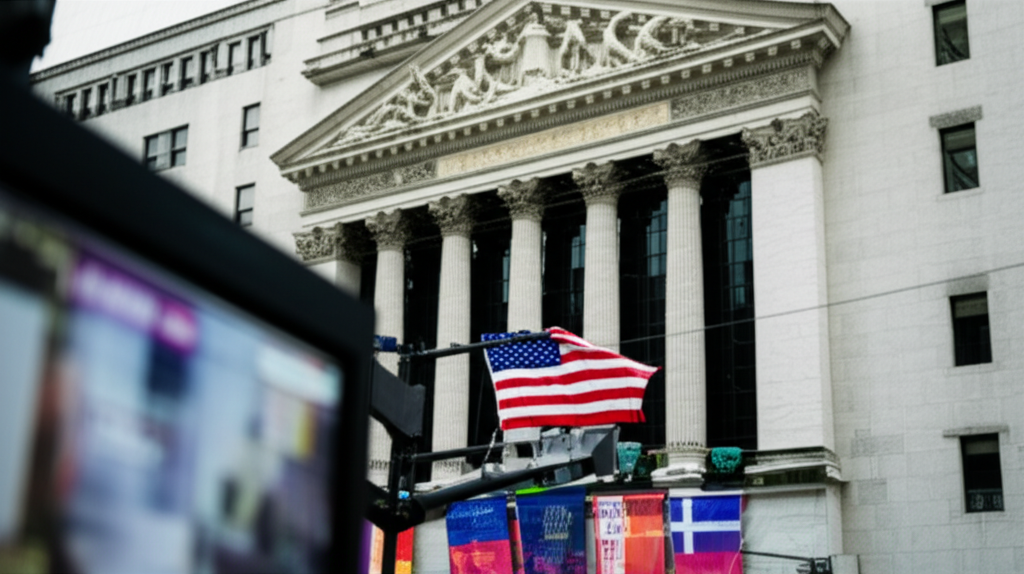S&P 500: Stocks Face Uncertainty Amid Middle East Tensions, Data and Fed
The S&P 500, often regarded as the most accurate barometer of the U.S. stock market’s health, currently finds itself navigating a turbulent sea of uncertainty. For young adults looking to build their financial literacy and understand the forces shaping their investment landscape, comprehending these intertwined pressures is crucial. The market’s current volatility isn’t random; it’s a direct reflection of three dominant themes: escalating geopolitical tensions in the Middle East, a deluge of incoming economic data, and the persistent influence of the Federal Reserve’s monetary policy decisions.
Geopolitical instability, particularly in the Middle East, casts a long shadow over global markets. This isn’t just about headlines; it’s about tangible economic consequences. The region’s centrality to global energy supplies means that any escalation can directly impact crude oil prices. Higher oil prices translate into increased input costs for businesses, potentially squeezing profit margins, and higher fuel costs for consumers, which can curb discretionary spending. Furthermore, geopolitical risks can trigger a flight to safety among investors, leading them to divest from equities and seek refuge in assets like U.S. Treasury bonds or gold. This shift can drain capital from stock markets, causing broad sell-offs and increased volatility. Beyond energy, supply chain disruptions, insurance costs for shipping, and general investor sentiment are all highly susceptible to the geopolitical temperature. For a market built on confidence and predictability, sustained uncertainty from a critical region like the Middle East introduces an unpredictable variable that financial models struggle to quantify, making investors more hesitant and driving market indecision.
Adding to this complex picture is the relentless stream of economic data. From inflation reports to employment figures and consumer spending trends, each data point offers a glimpse into the health of the U.S. economy and, by extension, the earnings potential of S&P 500 companies. Investors are meticulously scrutinizing metrics like the Consumer Price Index (CPI), Producer Price Index (PPI), Personal Consumption Expenditures (PCE), jobs reports (like Non-Farm Payrolls and the unemployment rate), Retail Sales, and Gross Domestic Product (GDP) growth. Strong economic data can signal a robust economy, potentially bolstering corporate earnings and stock valuations. However, if data suggests inflation remains stubbornly high or even re-accelerates, it can trigger fears that the Federal Reserve will maintain a “higher for longer” interest rate stance, or even consider further rate hikes, which is generally bearish for stocks. Conversely, weak economic data might suggest an impending recession, leading to concerns about corporate profitability and prompting investors to pull back. The market often reacts sharply to these data releases, as they constantly recalibrate expectations for economic growth and the Federal Reserve’s next moves.
Finally, the shadow of the Federal Reserve looms large over the market. The Fed’s dual mandateto achieve maximum employment and price stabilityguides its monetary policy decisions, most notably its stance on interest rates. After an aggressive rate-hiking cycle to combat inflation, the market is now intently focused on the timing and pace of potential rate cuts. Every statement from Fed officials, every FOMC (Federal Open Market Committee) meeting minutes, and every “dot plot” (which outlines policymakers’ individual interest rate projections) is dissected for clues. Higher interest rates increase borrowing costs for businesses and consumers, which can dampen economic activity, reduce corporate profits, and make equities less attractive compared to fixed-income investments. Conversely, lower interest rates tend to stimulate economic growth and boost stock valuations by making borrowing cheaper and increasing the present value of future earnings. The S&P 500’s direction is heavily influenced by market perceptions of whether the Fed will ease policy soon, hold rates steady, or even consider tightening further if inflation proves resilient. The constant tug-of-war between market expectations and the Fed’s cautious, data-dependent approach creates significant volatility.
In essence, the S&P 500’s current state of uncertainty is a direct consequence of these three interacting forces. Geopolitical events can impact economic data (e.g., oil prices driving inflation), which in turn influences the Federal Reserve’s decisions. The Fed’s actions then ripple through the economy, affecting corporate performance and investor sentiment. For young investors, understanding this intricate dance is key to navigating the market. It underscores the importance of staying informed, looking beyond daily fluctuations, and potentially adopting a diversified investment strategy to weather the ongoing storm of geopolitical tensions, economic data surprises, and anticipated Federal Reserve actions. The path forward remains unclear, demanding vigilance and a long-term perspective.





